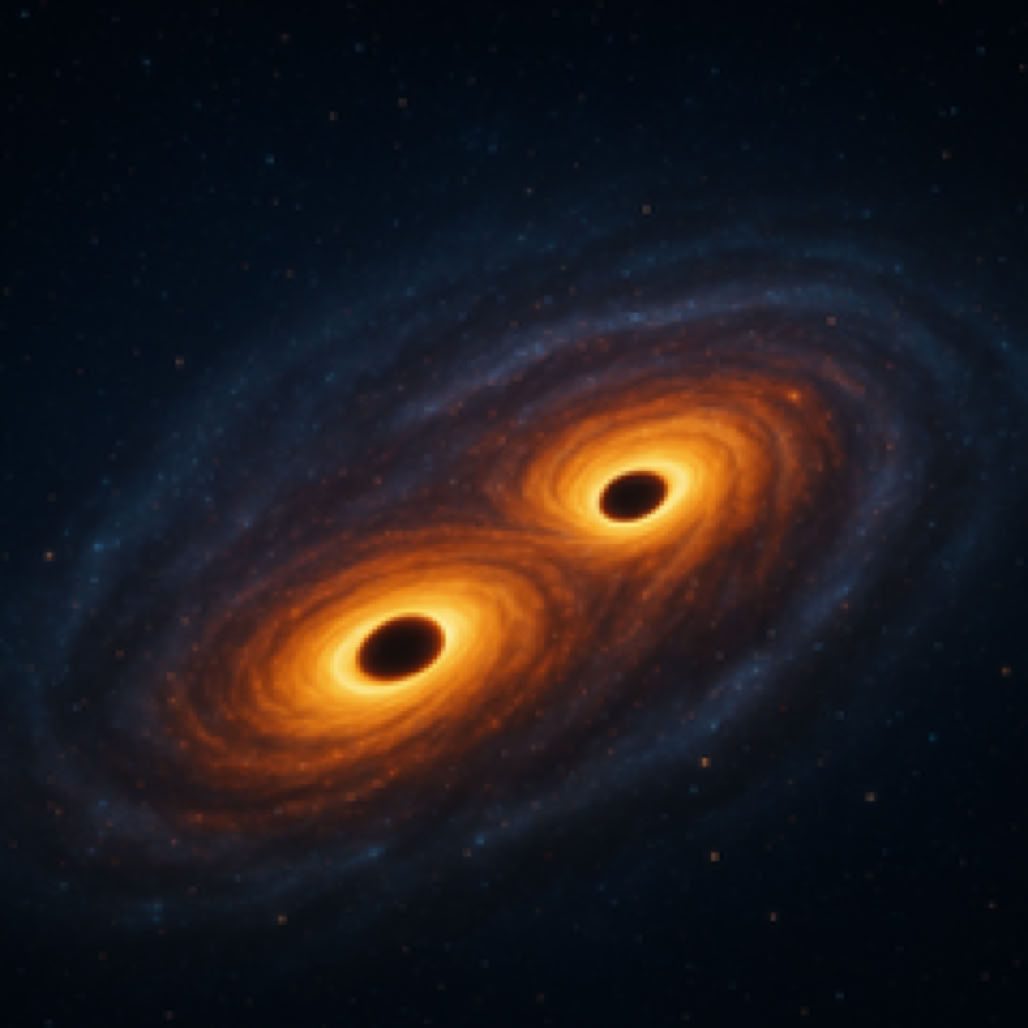by Laurentiu Caramete, PhD

In a major step forward for astrophysics, researchers may have uncovered a binary supermassive black hole system in the active galaxy PG 1553+153, offering a tantalizing glimpse into how galaxies evolve—and what lies ahead for gravitational wave astronomy.
Much like the rare double-yolked egg, this system appears to house two supermassive black holes orbiting each other at its center. These cosmic giants likely formed when two galaxies merged, their central black holes becoming gravitationally bound in a slow-motion dance lasting hundreds of millions of years.
The international research team combined modern astronomical observations with historical data—some dating back to 1900 and preserved on digitized photographic plates from the DASCH project at Harvard. They identified a short-term light cycle of 2.2 years and, crucially, a newly discovered 20-year brightness variation. These patterns suggest the presence of two orbiting black holes, with one about 2.5 times more massive than the other.
Detailed models and simulations of the binary interactions suggested that sometimes, when the black holes pull in gas, dense clumps of gas collect around the outside of the hole. They calculated that the time it takes for these clumps to orbit around the two black holes should be five to 10 times longer than the time it takes for the two black holes to circle each other.
If a binary black hole system caused the 2.2-year periodic variation in PG 1553+153, then we should also be able to see a longer pattern of variation, about every 10 to 20 years, when the clumps of gas circle around the black holes.
Fortunately this is exacly what researchers have found in historical data: a 20-year pattern that shows that there is a binary system in PG 1553+153. Other consequences followed, for instance, they found that the mass of one of the black holes is 2 and a half times as large as the other, also that their orbit is nearly circular.
This discovery is more than a celestial curiosity—it has major implications for gravitational wave observatories which actively are searching for candidates for observations.
Space-based missions like the upcoming Laser Interferometer Space Antenna (LISA), scheduled for launch by the European Space Agency in the 2030s, are designed specifically to detect low-frequency gravitational waves emitted by massive systems like binary supermassive black holes. If confirmed, PG 1553+153 could become one of LISA’s most promising early targets.
Currently, ground-based detectors such as LIGO and Virgo can only detect high-frequency gravitational waves from smaller black hole or neutron star mergers. Binary supermassive black holes emit gravitational waves at much lower frequencies—waves that LISA is uniquely equipped to observe from space.
Beyond gravitational waves, studying binary supermassive black holes offers key insights into galaxy mergers, black hole growth, and the dynamics of extreme gravity. Understanding how often these binaries form and how they evolve can help map the history of structure formation in the universe.
For now, the team will continue observing PG 1553+153, watching its flickering light for more clues. But soon, the next generation of gravitational wave observatories could listen in directly—confirming not just this system, but unlocking a hidden population of black hole duos shaping the cosmos in silence.
References:
https://iopscience.iop.org/article/10.3847/1538-4357/ad310a
https://journals.aps.org/prd/abstract/10.1103/PhysRevD.106.103010
https://academic.oup.com/mnras/article/527/4/10168/7371664?login=false